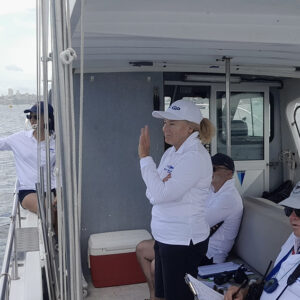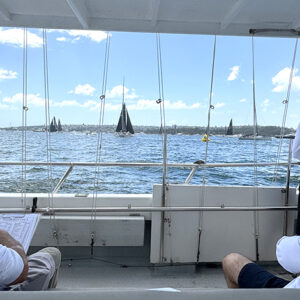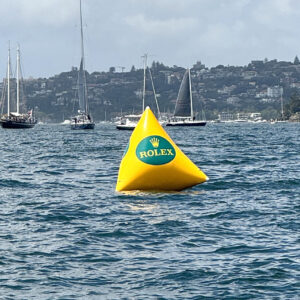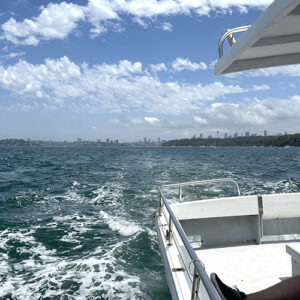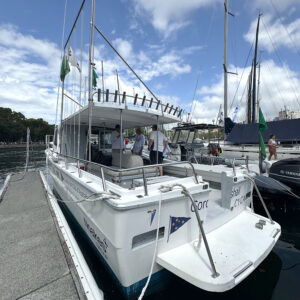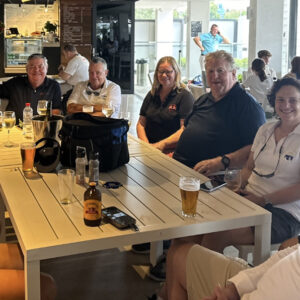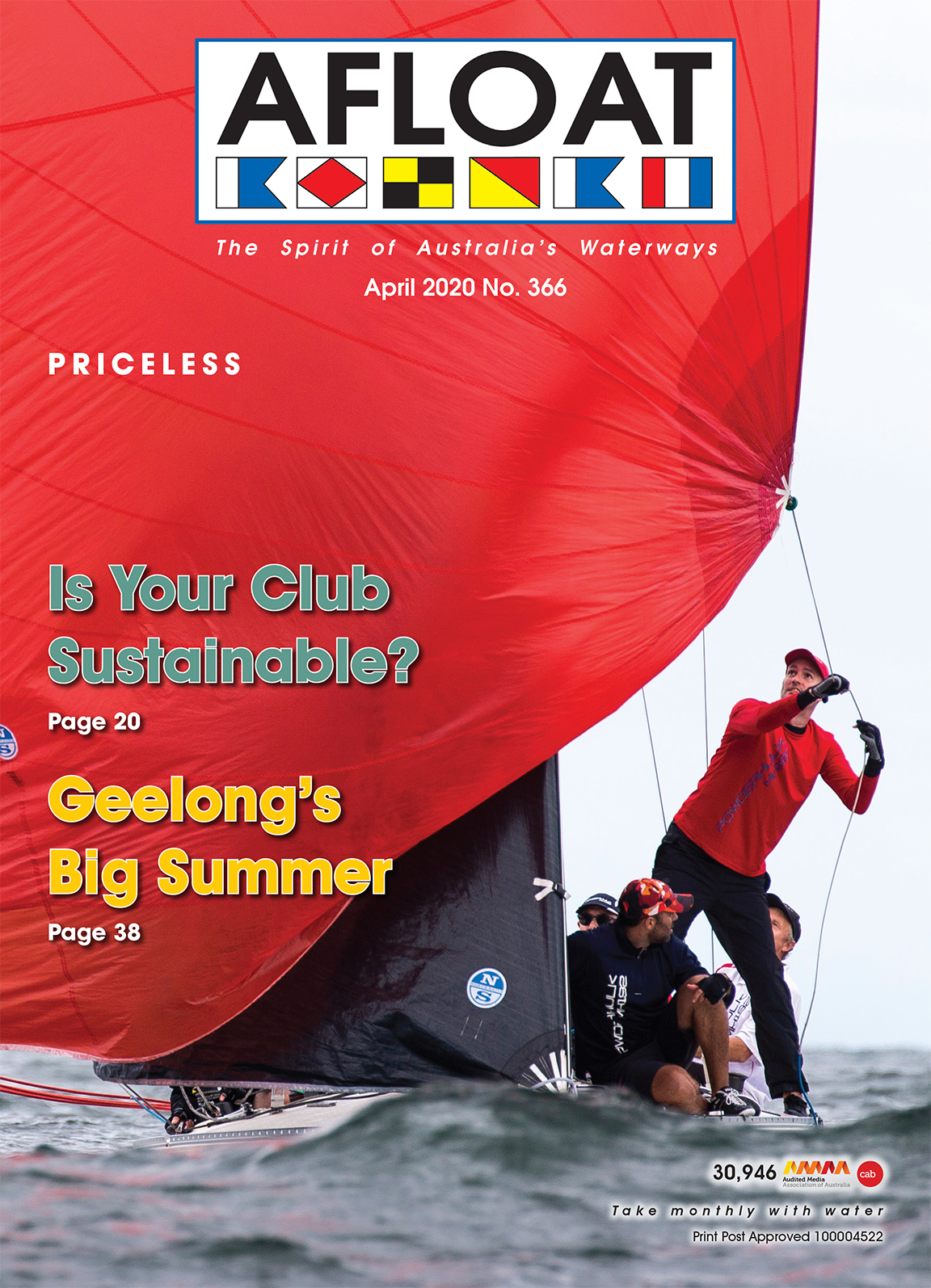The Hobart Start of 2023

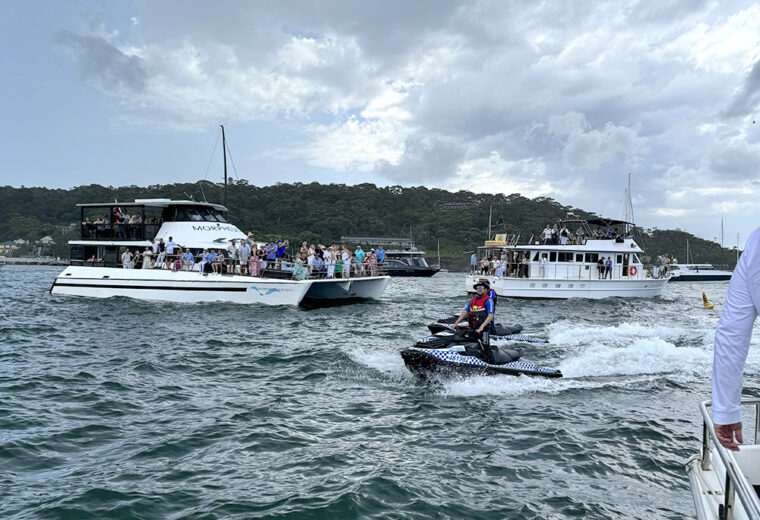
by Shue Z
As Shue’s plan to do the Hobart Race this year fell apart due to various reasons, She joined the Race Committee team to help at the Start Line 1 of the 78th Hobart
CYCA has long been a hub for an alternative Boxing Day experience, Hobart Race fervour. From early in the morning, the hustling marina were teeming with sailors, families, spectators, and media personnel. Walking along the docks on Boxing Day morning, I found it hard to dodge the lenses of cameras, interviewing skippers and sailors before the race.
The World Was Watching!
To spectators and media, the Start and the Finish are the two attention grabbing ends of Hobart race. The online tracking system in between is less vivid. The Finish, awaited and cheered-on by media and hundreds of spectators at the Dock, gives due recognition and welcome to boats that manage to finish the race. But few boats, except for some well-matched rivals, will race neck to neck to the finish line to create the breathtaking thrill of the intense competition.
Whereas, the Start is a complete performance, a show with all elements of a competitive sport.
The Exclusion Zone
From midday, the Exclusion Zone took effect. A maritime tapestry was unfolded on the Harbour. Yachts, ranging from the 30ft two-handed competitors to the 30m maxis crewed by twenty or more, displayed the orange storm jib and the brightly visible trysail to the Committee Vessel.
The Harbour was buzzed with an orchestrated symphony. TV helicopters were hovering over, capturing the iconic event below. Media boats were darting and weaving, lenses focused on the sleek yachts preparing for the start of the adventure. In between, the maritime police vessels were patrolling vigilantly to ensure no naughty spectator boats sneaked into the Exclusion Zone. Hundreds of spectator boats behind the Exclusion Zone and onlookers on land chose to dedicate their Boxing Day to watching this iconic show, but, in turn, becoming an integral part of the show itself.
The Start Boat Vs The VIP Cannon Boat
At Around 12:30pm, a storm, which had been brewing and forecasted, broke. But neither the morale of the sailors nor the enthusiasm of the spectators were dampened. Soon, the clouds melted away, and the rain-patch disappeared.
At 12:50pm sharp, Dennis Thompson, the Principal Race Officer, called out the 10-minute countdown from the official start boat, Offshore, which was moored to the west end of Line 1. The ceremony became more lively when a cannon was fired at the same time from the official VIP boat, Jackson, which was positioned close to Offshore, and which was often mistaken as the start boat. The tradition of firing a cannon was a sign of respect to sailors and the fleet. The practice was kept alive in Hobart Start. The VIP guest invited to fire the cannon this year was Dick Sargeant, Australia’s first Olympic sailing gold medalist.
Five minutes to 13:00pm, another cannon was fired. The tension and the excitement declared itself more precisely. Boats began to jostle to secure the optimal position for a perfect start.
It’s A Show!
It’s Not a Dash, Why the Rush?
At 12:59, Race Officers on the four starting Lines pressed a long hoot to indicate the one minute countdown. Adrenaline kicked in. It was the moment that more words of swearing and yelling could be heard than in any other dictionaries. Skippers steered the boats through eyes of needles, compromising safety and risking damages to the boat, all striving to lead at the off.
But why the rush for a few seconds at the start, for a 628nm race?
The Four Starting Lines?
For Hobart Start, there were four Starting Lines, designed to be parallel to each other. They were set apart at an approximate 200m distance to each other, but boats allocated to each Line started at the same time. The entire fleet of 103 boats simultaneously set sail from the four starting lines, adding actions, suspense, and chances of drama to the event. The spectacle it offered to TV and media sensibility is of a breathtaking magnitude. That’s why 90 percent of the attention is on the Start. That’s why the Start was more like a show.
Line 1, designated for big boats had always been the attention of media focus. Many of these boats were crewed by professional sailors and sponsored by corporations. Luxury in size and elegant in design, they represented big budge sailing. To them, the Start was the show to demonstrate the cutting-edge design of the boat, boosted by the virtuosity of the team. They competed to be the first out of Sydney Heads, thus basking their sponsors in the spotlight too.
Line 2 was positioned near Neilson Park for middle sized boats. With reasonably comfortable sizes, they were designed for speed and endurance, often attracting a diverse range of skilled sailors. They were the competitive yet still approachable category in the race. They wanted to have a crack at the Start, and to get the worth of the money and time invested.
Boats starting from Line 3 and 4 were smaller in size but nimble in manoeuvre. These vessels, characterised by extraordinary resilience, harboured unique purposes to join the race. Whether it’s the two-handed Currawong, Sylph VI with an unofficial ‘cat’ crew, or a vessel simply fulfilling a sailor’s bucket list, they all added a distinctive charm and purposeful spirit to the narrative of the Hobart race. They might not care very much about where they would end in the race, but the Start had to be as perfect as possible, fulfilling the bucket list with a flawless performance.
A Long Game or A Short Game
An Individual Recall
For the sake of safety, Hobart Start doesn’t do general recall, but only individual recalls. However, the offending boat will not be informed over the radio until after 5 minutes after the start. As a result, OCS could a real pain when the boat was happily making her way towards the Heads.
In addition, the use of International Code Flag ‘I’ as the Preparatory Flag for the Start, introduced an additional layer of complexity. A boat that was OCS within a minute of their start, was required to return to the pre-start side from outside of either the start mark or the pin mark. The idea was to keep the boat returning out of the way of the fleet racing.
Just a minute before the Start, a boat that was supposed to start from Line 3 was observed by the Race Officials on Line 2, thus became OCS on Line 3. Five minutes later, she was informed and had to scurry back to restart from her correct Line. Fortunately she did well in the race along the coast.
Penalty Turns or Not, That Is A Question!
The age-old racing adage holds true: “You can’t win the race in the harbour, but you can certainly lose it in the harbour.” It is true that more cases of protests and rule breaches happened at the Start. It is also true that, rule breaches, if ignored by the boat, would spell peril at the finish.
In Hobart history, three boats that had been provisionally named the winner lost their title on protest. Wild Wave, in 1953, was disqualified for causing a collision at the start; Naivana, in 1983, for failing to give room to another boat at the start. Most recently, in 2017, Wild Oats XI lost the Line Honours to Comanche due to a near-collision incident near Heads.
This year, around 10 minutes after the Start, a drama happened between two super maxis, Andoo Comanche and Scallywag, when the latter was protested for tacking too close to Andoo Comanche who’s on the Starboard tack. The scenario created the suspense on whether or when Scallywag would do the penalty turns before reaching to 33.53S, approximately near Bondi, to clear the protest. Scallywag did take the 720-degree penalty turns. Unfortunately, she had to retire from the race later due to its broken bow sprit.
Returning Waves
On the way back to the Club, the empty harbour became sentimental. The temporary absence of racing yachts reminded me of how much we had owed to them for keeping the harbour vibrant. The air of festivities was being extended on the large TV screen at the club.
It’s amazing teamwork to make the race happen and proceed so smoothly. Most importantly, it involves the support from race enthusiasts, sailors and non-sailors alike. It’s the event that gave people who went to the club the feeling that they had something in common. That’s why I was offered the following comments by two non-sailors.
“I come here every year on this day, have a coffee here and then walk along docks.”, said a non-sailor with whom we shared a coffee table.
“This is the highlight of my year.” A non-sailor lady who walked past me initiated the conversation. She has come to the club on Boxing Day morning for over 30 years to feel the festive vibe.
Their comment of the Day highlighted the iconic features of the Race. If the race can be so popular among non-sailors, it’s not surprising that my 17-year-old daughter Nina, who did the Hobart delivery after the 77th Hobart, made the following comment weeks before Christmas:
“I’m not that much looking forward to Christmas this year. I’m more looking forward to the Boxing Day.”
Of course, she was referring to the Hobart Start.

